Learn from the process consultant's most effective tools
As a leader, it can be useful to draw on tools from the process consultant's toolbox when working with teams. Process consulting is creating a relationship with another that allows them to perceive, understand and act on the events that occur in their internal or external environment. All with the aim of improving the situation for the other (Schein, 1999, p. 20).
In this article, we present four concrete and simple tools that you as a manager can use in team coaching.
Teams require flexibility, the ability to embrace complexity, adapt and innovate - and of course, the ability to work closely across disciplines. Teams often bring together people with different backgrounds, beliefs and ways of communicating. Teams are social systems made up of communication and are therefore inherently ever-changing - even if the outside world stands still (it doesn't - thankfully, some would say). This can lead to challenges and conflicts within the team.
Fundamental choice situation
Such a conflict situation puts the manager in a fundamental choice situation, where you can choose to use formal management power: analyze what needs to be done and then do it. This could be structural changes such as layoffs or replacements in the team. Or, as a manager, you can go the dialogical route and involve the team in finding a way out of the problems. The latter sounds preferable - but how do you go about it?
Here you can draw on the process consultant's toolbox and try your hand at leadership-based team coaching. As a manager, the traditional, neutral coaching role that the consultant can take on is not possible. The team coach will focus on creating targeted and developing conversations about the team's practices and functioning, the way the team organizes itself and develops in relation to solving work tasks and, for example, in relation to customers/users and other teams. Instead, as a manager, you need to be clear, direction-setting and framework-setting - but not dominating - in the process where the team finds solutions.
It's not always easy to see what the team and situation is asking for - but the solution is often simple: Ask!
Key tools for team coaching
The essence of leadership-based team coaching is being able to inspire team members to reflect, engage team members in task completion and shared discussions, while creating purposeful, well-managed conversations.
On the one hand, you need to be able to inspire using questioning techniques. On the other hand, it's important to be able to manage and target the processes without dominating the content.
Read more about our training
Want to be even better equipped to manage processes?
The Process Consultant program gives you the methods to design, facilitate and lead strategic development processes and changes to create the impact you need.
This is an education for those who work with development, processes and change management.
Tool 1: Questioning techniques
Questioning is a key skill, as questions are the primary tools to get the team to be reflective about their own practice. Here we zoom in on two types of questions:
Generative questions
Questions that ask for new possibilities, understanding or perspectives have a generative effect. They ask directly about the possibility of a second, third or fourth option. This type of question can address the tendency for teams to get stuck on the solutions that have already been introduced, even if everyone agrees that they are not optimal. Asking about other options expands the team's structure of understanding. For example, development-oriented questions such as:
- When does the team work best?
- What skills do you use as a team to succeed?
Another type of question with a generative effect is the future-oriented question. Asking a future-oriented question gives members the opportunity to step up and think big about what they want to create and how they want the team to function. It can be questions like:
- Imagine you're over the current problems.
- How do you work together on the challenges?
- How is your collaboration?
The impact of forward-looking questions often shows up as optimism, purpose and engagement, as well as increased support for the decisions made afterwards.
Bridging questions
As the name suggests, questions "bridge" the gap between team members' opinions, experiences, views and suggestions. For example, you can ask everyone:
- What are the commonalities in what we've talked about so far?"
Or the individual:
- If you were to build on what others have highlighted, what would you suggest?
The shared starting point and its extension in the form of reflection and additions helps the team move beyond the lowest common denominator
Tool 2: Gamemaster skills
The questioning skill is the first step in most team coaching. But it also requires specific skills when you need to manage and target conversations.
"Gamemaster skills" are the ability to manage the process of the conversation, creating clear goals and clear shared conclusions without controlling the content. This requires a dual skill set from the leader - being able to engage in evolving discussions in an inspiring and constructive way, while also having an overview of the process so you can change the team's way of working when necessary.
Using a variety of advanced communicative techniques(contract, time out and closure), the good gamemaster is able to handle two levels of conversation simultaneously: the action level and the meta level.
- The action level is the level of the conversation where different parties comment on the topic, ask questions, etc.
- The meta level is where the coach/manager, alone or together with the team, takes a helicopter view of the conversation and talks about the way you work in order to coordinate the course of the conversation and possibly create more constructive, effective and helpful approaches

The contract in team coaching
- Agree on a common clarification of topic, goals and working method.
- There are two different ways to create contracts: the fixed contract, where the manager defines the contract themselves, and the open contract, which the manager creates with the team
- During the conversation, it's important for the team to take a helicopter view and relate to the conversation on a meta level: How far have we come? Are we working on the right things? Time-outs are useful for this.
Time-outs in team coaching
- Time-outs ensure that the topic, goals and way of working are continually agreed and adjusted to keep the conversation productive and fruitful.
- The strength of working with time-outs is that you always have an eye on whether the conversation is on track, and you can constantly make small shifts in pace, focus and working style to ensure that the work develops constructively.
Finishing technique
- Proper closure is crucial to the outcome of a coaching conversation. Closure is a technique that creates a shared examination of the outcome of the conversation and what happens next - a sort of 'who does what when'.
- This ensures that a shared view of the decisions and plans made during the conversation is created and that the results of the conversation are anchored in practice.
The art of implementation
We offer management and organizational sparring, research-based training and presentations on implementation as well as training courses with a specific focus on giving you and your organization general implementation skills. Read examples of our services here.
Tool 3: Visual scaffolding
When you as a manager coach a team, a large amount of information is generated. To retain this information and support the conversation, you can work with visual scaffolding in the form of writing, drawings, etc. on posters or whiteboards.
The purpose is for the team to experience a common visual reference point in the conversation that serves as a common marker for what ideas and inputs there are for a given topic. At the same time, the team can continuously see what they are helping to create.
There are two types of visual scaffolding:
- Documenting scaffolding that occurs along the way and documents the knowledge created.
- Creative scaffolds that act as 'recipes' for work processes. These can be process models for different purposes such as planning, project start-up, ideation, etc.
A variation of creative visual scaffolding is called phase models. When used competently, the phase model can be used to consider how the conversation can be structured to create valuable development for the team. There are many well-functioning phase models. One of them is the LAG model.
Tool 4: The LAG model
With this approach, the team builds on the lessons it learns as it goes along. The LAG model is based on learning theories that assume that development occurs in the creative tension between understanding and learning about the team's current situation and imagining and agreeing on where the team wants to be in the future.

Phase 1: Learning
- Team members share and clarify perceptions and opinions about the team's status. The goal is to learn and create a shared understanding of the team's situation.
Phase 2: Agreements
- The team shares suggestions for future practice based on the learning in phase 1. The goal is for the team to establish a common direction for practice.
Phase 3: Do
- Once concrete agreements for the team's practice have been set up, the actions to be taken are discussed. The goal is for the team to make concrete agreements on subsequent joint and individual action.
With the four tools in this article, you as a manager have gained insight into the process consultant's toolbox. Although you can't take on a neutral coaching role in leadership-based team coaching, you can be clear, set the direction and framework - without being dominant - and thus be part of the coaching process where the team finds the solutions. You can read about more tools in the book Leadership-based Team Coaching.





